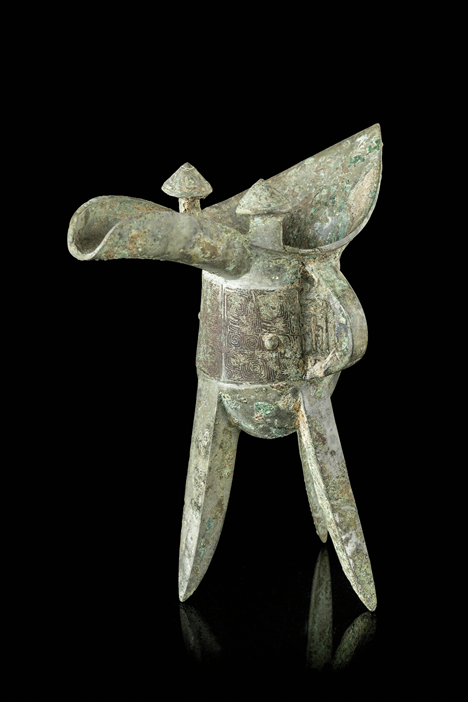On June 14th 2017, a superb example of a Chinese three-footed bronze ceremonial jug from the Shang Dynasty (circa 1600 BC – 1046 BC), from an Italian private collection, is being presented in the next auction of Asian art. This period, as well as the following Zhou Dynasty (1046 BC – 256 BC), is renowned as the finest period for the production of objects in bronze. In particular, these pieces were used with wine, that had to be consumed by the medicine man only during rituals so he could enter into a trance and make contact with ancestors that were custodians of the past and trusted counselors for the present and future. There was a strong connection between the rituals of the medicine men and the political life of the country since politics, through the oracle, could gain access to the divine predictions and to the terrestrial destinies that were governed by conspiracies and legendary cruelty. In the Shang inscriptions, the king often turned to an oracle in order to request, by means of soothsaying, advice from his ancestors on all of the most important affairs of State, as if these particular otherworldly presences were more intelligent than the men and that those men who possessed such instruments to gain access to their ancestors were in some way better-equipped to govern. This was a power chain that saw the medicine man – or shaman – as a part of the dominated classes and the king, who directed the shaman, as the uncontested monarch of the heavens and earth.
The close connection between art and politics is more than obvious with the myth of the “Nine tripods”. It was said that this series of nine vases had been made by King Yu of the Xia Dynasty, prior to the Shang dynasty, when he divided his territory up into nine provinces. The possession of all nine pieces was considered to be a sign of legitimate authority over all the kingdom (as was said at the time, over “all the heavens”).
1037 Views |
Like

